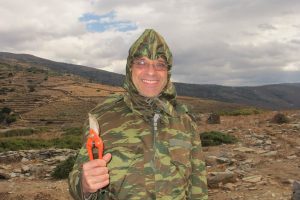
This year, 2013, is the first full excavation season at Zagora since the 1960s and 70s. This post describes the directors’ plans for processing finds from the Zagora excavation season in 2013, and what it is hoped the finds may reveal about the settlement at Zagora.
The overview of the directors’ approach to the excavations this year is here (part 1) and here (part 2).
The following is a lightly edited version of what Dr Stavros Paspalas* told Irma Havlicek in an interview conducted on 4 October 2013.
Finds management – a serious responsibility
The finds from any excavation contribute immensely to our understanding of the site, be it a settlement site, as Zagora is, or a sanctuary or a cemetery. In the instance of Zagora, the finds are pretty much like the butter between the slices of bread, if I can use such an analogy. We have the architecture of the site from the excavation but between the architectural features, below the architectural features, above some architectural features, there may be finds. And they fill in the wider picture and help us to understand what activities took place within the spaces that are being excavated.
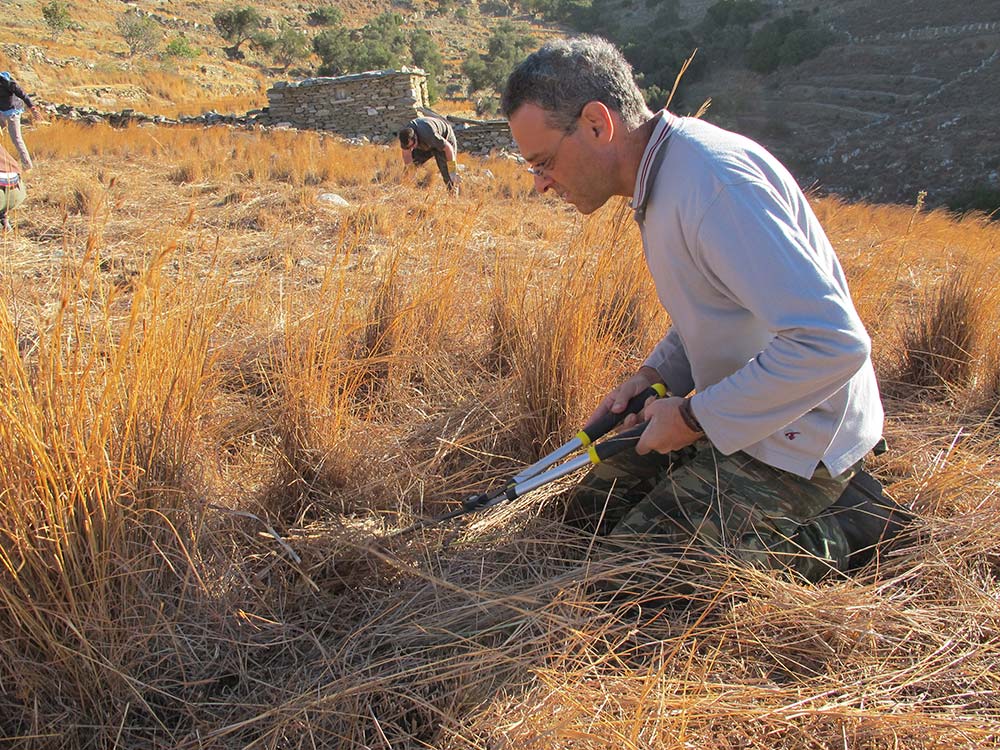
So it’s of utmost importance for our understanding of the site to carefully document the finds as we excavate them from Zagora and thereafter when we process them in the Andros Archaeological Museum. We must ensure that the processes of cleaning, conservation, documentation and storage are undertaken to the highest standards and with the greatest possible care – both for our research purposes and also because of the responsibility with which we are entrusted by our Greek hosts and the Greek Ministry of Culture (which we take very seriously) to protect this important evidence of Greek cultural heritage.
We have to know exactly where everything was found and also where it is stored now. And at any given moment we have to know where we have to go to find any item in the store rooms.
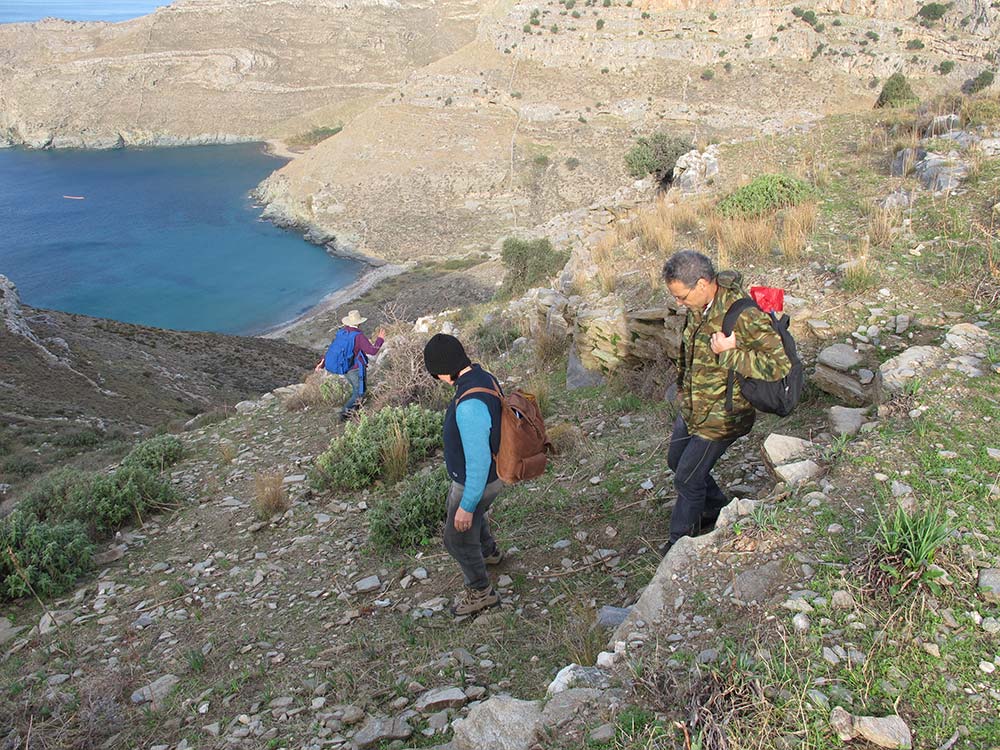
Categories of finds
Ceramics
There are a number of categories of finds likely at Zagora this year. The most numerous one is ceramic finds – pottery of all types. Fine ware that was used for dining and drinking purposes, as well as coarse ware food preparation vessels, storage vessels and transport vessels. So ceramics form the largest category of finds. And they require their own specific process – cleaning, and the like.
Metal objects
Then you have finds such as metal finds, which are even more demanding to conserve, depending on the metal, because they can deteriorate if not in optimum environmental storage conditions. Ceramics are much more hardy, more sturdy. They are likely to survive more easily than metal objects.
Metal objects we find at Zagora might be farm equipment or everyday household items like nails in a doorframe, for instance. They could be weaponry. They could be adornments for clothes, or clothes fasteners like pins, and jewellery. And items like that, of course, require the attention of professional conservators who know exactly the properties of these metals and how they should be treated. So we will have a conservator on the team to take care of these.
Bones
And then other categories of finds are animal bones. These are of utmost importance because they tell us something about the diet of those who inhabited the site. There is also the potential that they will provide evidence about what slaughtering techniques were carried out. And from studying the bones of animals one can tell if animals were being raised primarily for meat or for dairy products or their hides. So bone specialists are needed.
And again the process for storing bones is slightly different from that of pottery. It’s not as demanding as storing metals but nonetheless it has its own protocols.
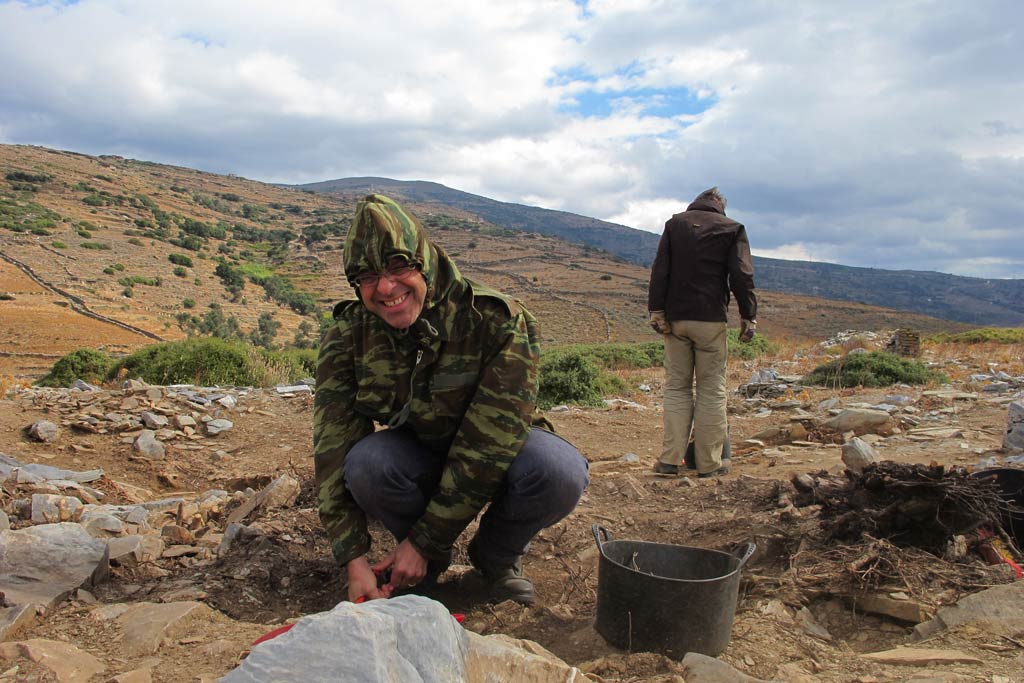
Seeds and marine animal remains
This year for the first time at Zagora we are fortunate to be having the help of Dr Evi Margaritis, Maria-Rosa Beshara and Dr Tatiana Theodoropoulou, who will be looking at seeds which are preserved in the archaeological record at the site and at the remains of marine animals, respectively.
Seeds and marine animal remains, clearly, are very very small. And so to retrieve these there will be a program of flotation – so not just dry sieving of soil, but its flotation through a series of sieves where the soil samples are passed through water and these very very small objects – seeds, other botanical remains which may have been preserved and small bones and shell – are collected.
And those three colleagues will be dealing with the retrieval of this material, its processing, and then its study and its publication. And that will give us for the first time an insight into questions of diet, and the wider environmental context of Zagora during, primarily, the 8th Century BCE. So that is a big plus for this series of campaigns.
Finds processing teams
The core finds processing team based at Andros Archaeological Museum is Ms Beatrice McLoughlin, from the Sydney Office of the Australian Archaeological Institute at Athens, who is an expert in the coarser wares of the Early Iron Age in the Aegean – particularly storage pithoi but also cooking wares and cooking preparation equipment. And I have the overview of the study of the fine wares – that’s primarily table wares for eating and cooking – the ‘fine china’ if you want to use that analogy.
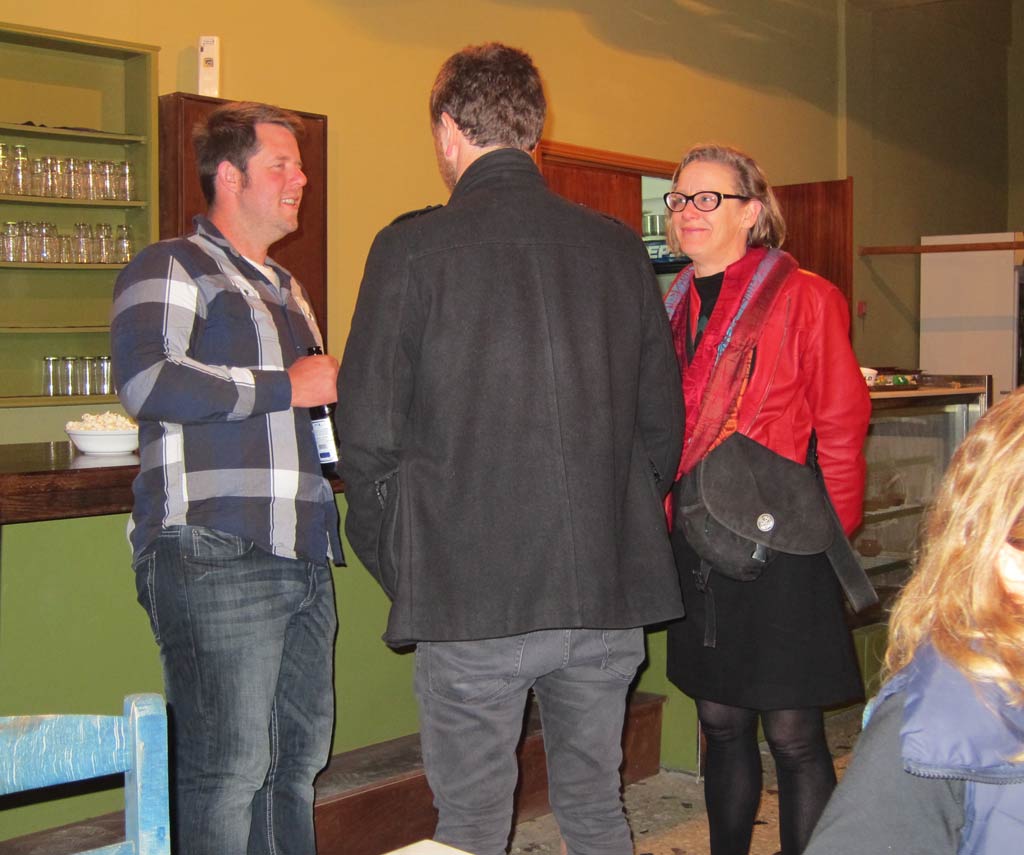
The ceramics come down to the Museum from the site every day that there are finds from the excavation. They’re soaked for at least 24 hours in water. And then they are cleaned by hand using a toothbrush and changing water over a period of time. And for that work, both Beatrice and I do some of that. But we will also be using the help of the students who are excavating on the site. And that will take place on a rotational basis so each of them gets to experience the finds processing.
This task may appear like a tiresome chore but it’s not. Because with the washing of the pottery, it is, in effect, an act of excavation in itself. Because with washing it, you discover what’s been excavated.
The excavators very often just see sherds leave the site as caked with mud or soil. It’s only once the material is washed that one can start to develop an appreciation of what’s been found; to identify the pieces and see what was being used in what parts of the site and to build up an image of differences and similarities. It also enables us to identify pieces that may be local or pieces that may have been imported from various other places – which may provide information about trade routes.
So, again, the idea is to build up a picture – a mosaic of life at Zagora.
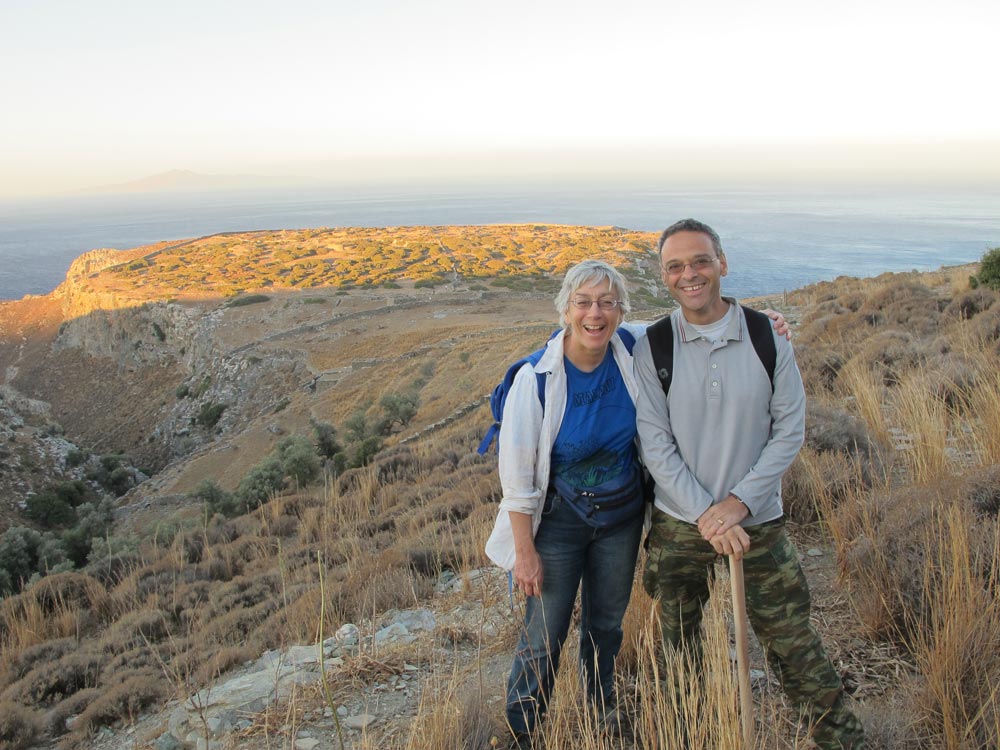
Logistics
An archaeological excavation season requires an enormous amount of logistics for both the excavation and also the finds processing.
We have to be very thorough with our planning so we have everything we need once the season commences. It’s a mundane task, but one has to think, OK: how many bags and of what sort are we going to need? Do I want paper bags? Do I want calico bags? Do I want plastic bags? And what size? One has to guesstimate because we never know exactly what will be found. So the logistics range from how much of the materials are required by the conservator. And of course the conservator, Dr Wendy Reade, who will be here in a few weeks, gives us help there. But, as I said before, the mundane task of how many toothbrushes are needed, how many plastic buckets are needed, how many bags are needed – all these things need to be available once the work is under way.
We probably won’t need to do it this year, but last year we had to get a carpenter in to make special drying racks for the pottery to dry once it’s been washed.
And then the actual recording system which is done on computers and tablets. Beatrice McLoughlin with Andrew Wilson, but primarily Beatrice McLoughlin, has spent a lot of time refining the process for that and it will all be done on computer. So I suppose that’s part of the logistics too.
The work on the site or the work in the museum is only one snapshot of the wider picture of what an archaeologist has to do.
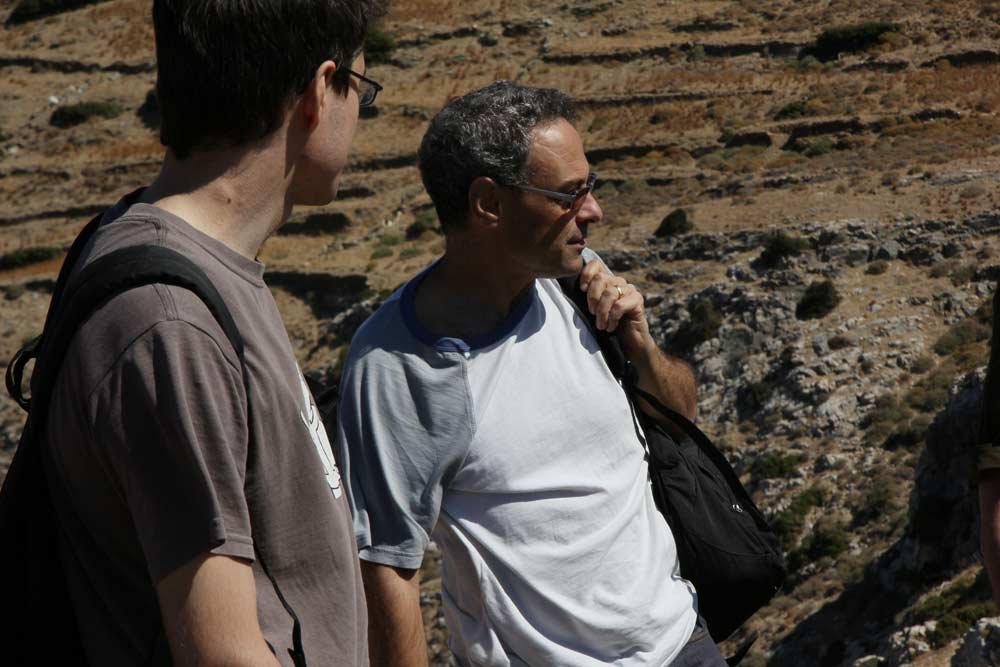
What we can expect in 2013
Excavation in 2012 was restricted to only the last ten days or so. And we had very little excavated material.
Now, if we go on the basis of what was found in the campaigns of the late 1960s and 70s, we will come across houses this year. When we do, we can expect to find fragments of many kinds of vessels. But also if we reach an intact floor deposit, then we can expect to find complete vases, albeit broken into many fragments.
Many pieces that are complete and are on display in the Archaeological Museum at Chora were once in houses just like ours. And I think we can have every expectation to find quite a number of complete vessels, though fragmentary on excavation, both fine wares and storage and coarse wares. Which, of course, put more demands on the conservator because she is going to have to put them together again.
That would be the major difference between what was found last year (mostly fragmentary sherds) and what may well be found this year. And we may well also find other items that one uses around one’s home. We may well have metal finds. We may have tools. We might find knives. But there is, of course, a degree of conjecture in all of that. But it’s a sound educated guess about what might be found in the excavated material.
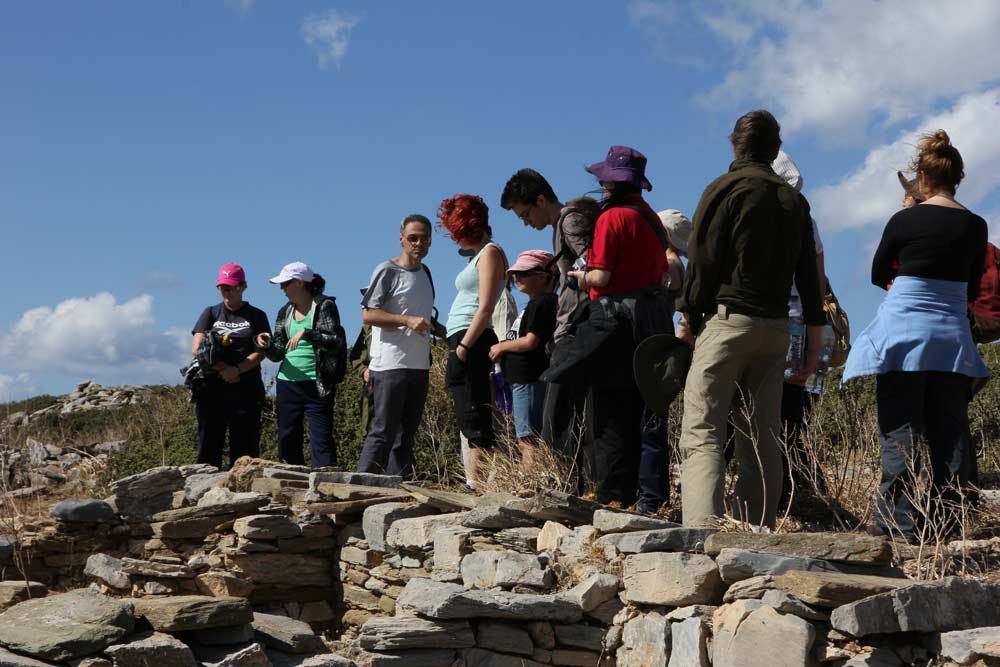
Thanks
Thanks to Dr Stavros Paspalas for the conversation on Friday 4 October 2013 which provided the content for this post.
* As a general rule, I don’t include professional designations such as Professor, Doctor, etc. when writing posts for this blog. That is because there is such a profusion of distinguished academics and professionals working on the Zagora Archaeological Project that the posts would be littered with doctors. Another reason is I think leaving the professional designations out generally helps to keep the tone of the blog friendly, informal, accessible and easily readable. However as this post introduces the directors’ approach to this year and also some of the specialists working on the project this year, I thought it worthwhile to include the designations in this post, so you can see just how many distinguished people are working on the project.


2 thoughts on “Directors’ plans for finds processing of 2013 Zagora material – an overview”
Its interesting to hear the detail of what is involved beyond the classic people in trenches with paintbrushes.
Looking forward to hearing about the diet of the Zagorarians at some point.
The wet sieving apparatus was carried down the track to Zagora a few days ago. Maria-Rosa Beshara, our wet sieving expert, arrived yesterday, and will be at the site for the first time today (Tuesday), to look for very small items like seeds which we hope will provide information about the diet of Zagorans.